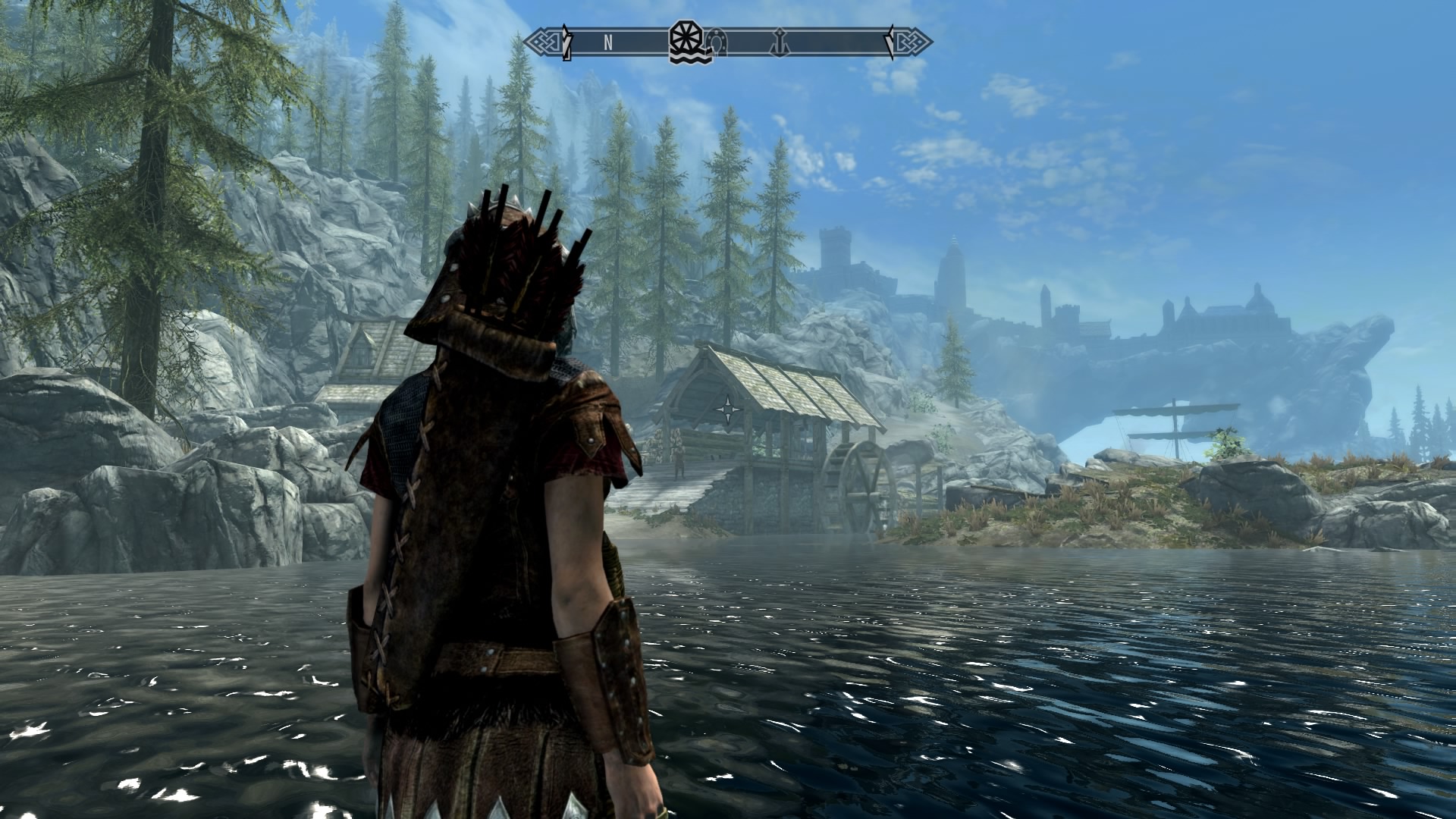There’s a lot of Breath of the Wild in Super Mario Odyssey, the most transformative Mario since 64
How Nintendo's Christmas big-hitter is revitalising the series, combining intricate joys with fresh, adventurous thinking.
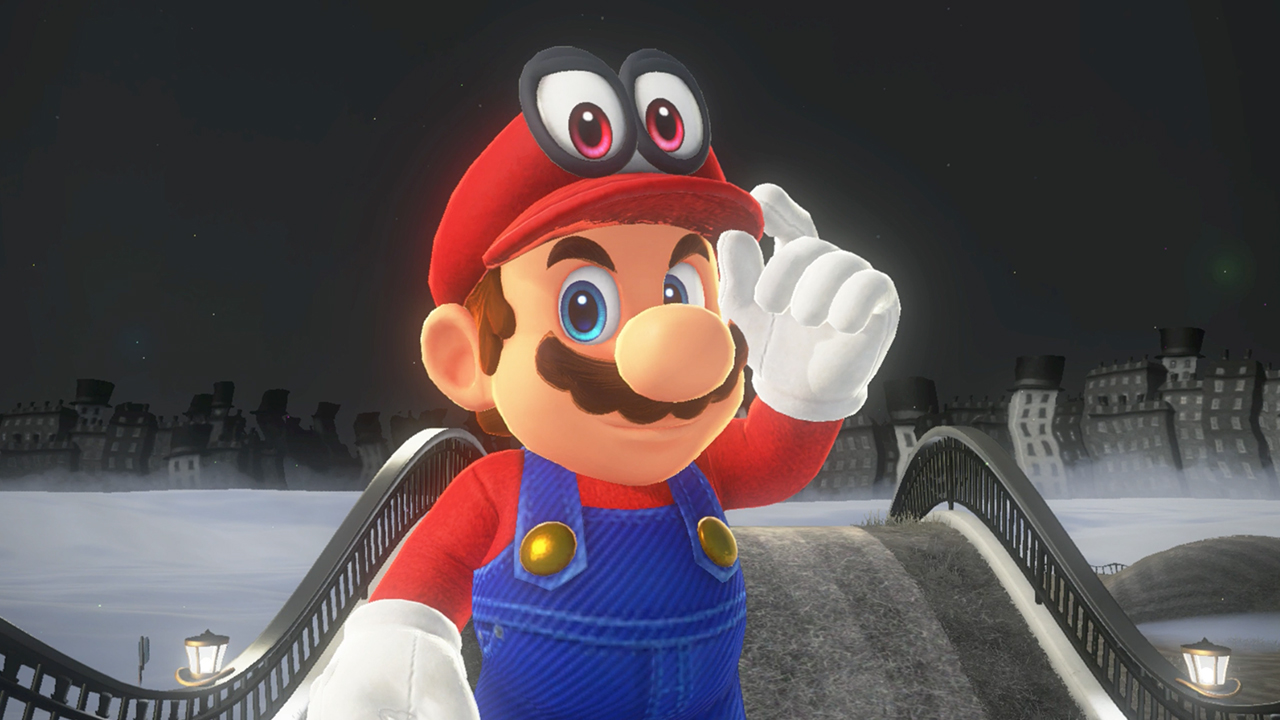
There’s an awful lot of The Legend of Zelda: Breath of the Wild in Super Mario Odyssey. Sometimes, it’s a direct lift: jump into a lake and dive beneath the water, for instance, and Mario borrows Link’s stamina wheel, repurposing it as a breath meter. Often, it’s in the scenery, in the way a tempting trinket looms on the horizon, far away and out of focus enough to compel closer inspection. It’s there in the structure, too. Instead of Stars, here Mario collects Moons to progress, and while plenty are locked away behind tricky platforming sections or boss battles, many are to be found through simple, playful experimentation with your surroundings.
A ground pound on a suspicious bump in a rooftop, for example, may yield a Moon, in the same way that dropping an apple into a statue’s empty offering tray might sprout a Korok seed. The closest point of comparison between the Switch debuts of Nintendo’s most famous video game faces, however, is a spiritual one. Super Mario Odyssey, like Breath of the Wild, is powered by the desire to break its own rules, to playfully thumb its nose at the conventions of its heritage. Like Breath of the Wild, it already appears exceptional.
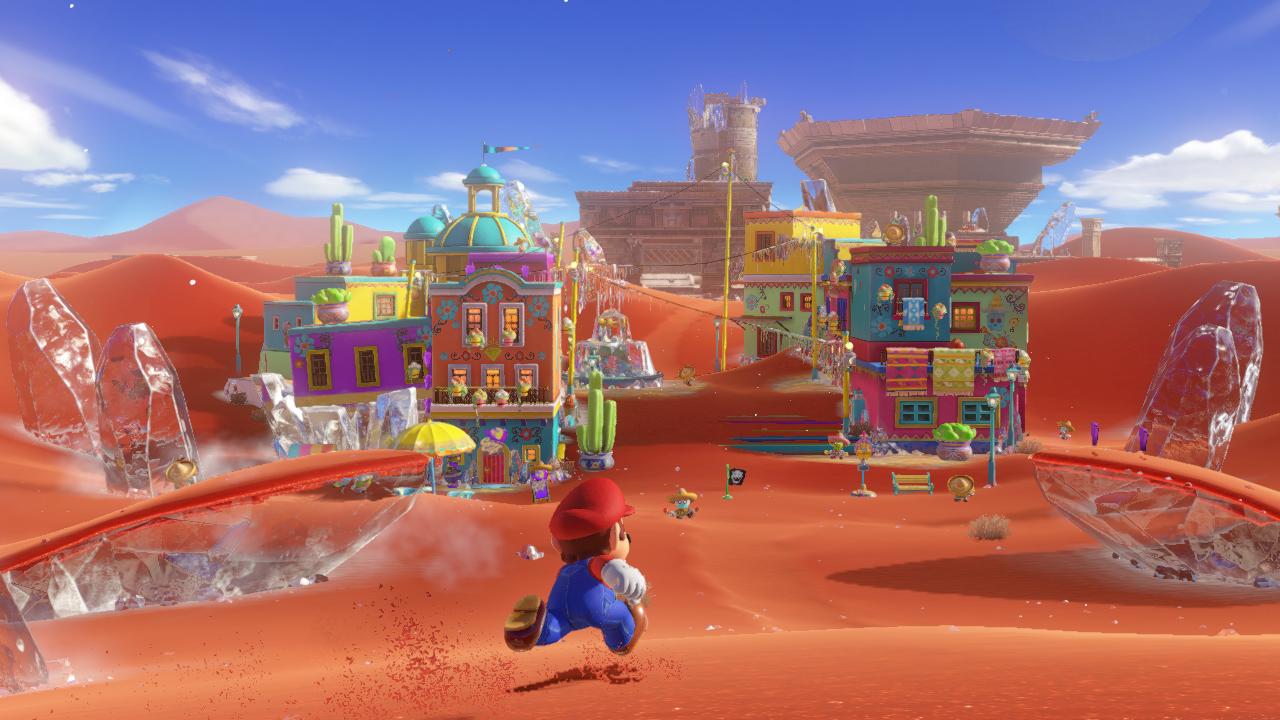
Odyssey heralds a return to the sandbox values of Super Mario 64 and Sunshine – but ‘sandbox’ is a western term that doesn’t quite do Nintendo’s design philosophy justice. It implies a toddler mucking about, a messy, improvisational style of play that often yields wonderful results. Instead, 3D Mario games are built on the concept of hakoniwa: a Japanese miniature garden, built in a small container, its tiny trees and shrubs given contextual scale with small figurines or bits of scenery. Look at the garden from a different perspective, and you find something new. Breath of the Wild is a sprawling, open-air landscape that begs you into its distant corners. Super Mario Odyssey, like hakoniwa, is dense and intricate, painstakingly assembled by extremely skilled hands.
For Odyssey, Nintendo has broken the rules of Mario in dramatic, fundamental ways.
“In Breath of the Wild, there’s a very wide open space,” producer Yoshiaki Koizumi tells me. “There’s a lot of emphasis on seeing a faraway location, and thinking about how you might get there. But in Super Mario Odyssey, the space is more compact. The goals, and the kinds of actions you use, are more about the things that are right in front of you, and how they will interact.” Hakoniwa’s influence is most obviously, literally evident in the Wooded Kingdom, a verdant, sun-dappled forest. This, it turns out, is actually a greenhouse, a handmade miniature flower garden whose yield has been stolen by Bowser (the story has the series antagonist kidnap Peach for a purpose this time: they’re to be married, and each kingdom has been somehow affected by his wedding plans).
Look out towards the horizon and you see a vast mountain range, but you can see the seams in the glass wall that hems you in. At first the kingdom seems small, with a high wall at one side and hedgerows around its perimeter, bordering a drop into the abyss. Yet following a line of coins that lead off a hedge – a route, you assume, to instant death – instead sees you land in the Deep Wood, an entirely new area. Throw a seed in one of the planters dotted around and a huge beanstalk raises up, offering a route back to the upper ground; pick the right one and you’ll emerge on the other side of the wall.
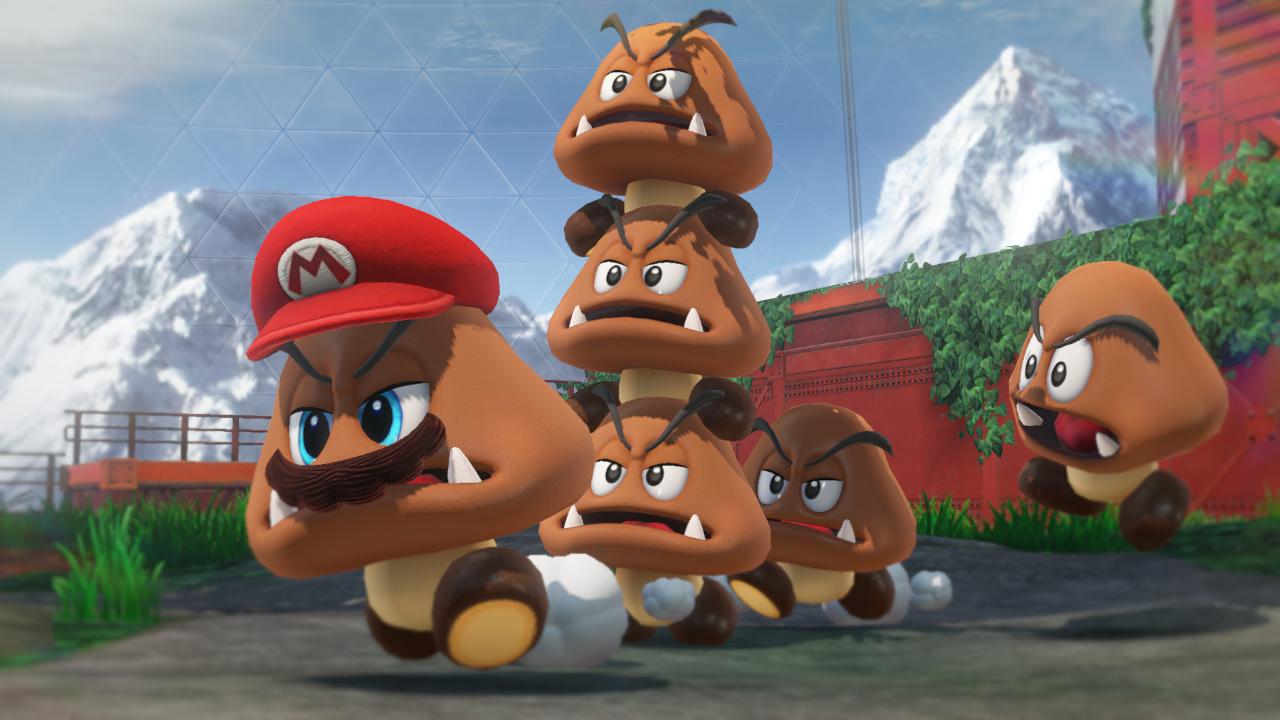
Use a nearby set of binoculars and you’re catapulted high into the sky, panning the camera around to find new routes or objectives, the miniature garden yielding more of its secrets the more angles you look at it from. None of this, by itself, is particularly new. Super Mario 64 and Sunshine were built along the same lines, albeit subtly changing the level layout for each new objective. But for Odyssey, Nintendo has broken the rules of Mario in dramatic, fundamental ways. While the layout of these spaces may feel familiar, if you try to traverse them using the traditional Mario moveset – run, jump, bounce – you won’t get far.
Hats off to some fresh new thinking
“Mario games begin development not just with one idea, but many,” Koizumi says. “You’ll have some ideas from previous projects that you weren’t able to incorporate into the final product, and maybe a few new ideas. Once you put them all together you start to see a little bit of a vision about how the game’s going to look and play as a whole. Once you have enough fun ideas, you can start to prototype each of those, play them, and see which ones naturally fall out because they don’t fit, or aren’t as much fun. Before long, you have a game concept that is starting to define itself.”
Sign up to the GamesRadar+ Newsletter
Weekly digests, tales from the communities you love, and more
Mario’s cap has always been important, even if it was originally designed out of necessity, since Nintendo’s coders couldn’t work out how to make his hair move realistically when he jumped in Donkey Kong. Along with his moustache, his pot belly and the buttons on his overalls, it is a defining characteristic of one of gaming’s most iconic silhouettes. Remember the shock of seeing it stolen, or blown off by a strong wind, in Super Mario 64, the first time you’d seen the head of hair beneath? That was intended to demean Mario, to rob him of his essence, and his power – he took more damage without it, and could no longer use special abilities. Losing it in Mario Sunshine exposed him to the elements, causing him to gradually lose health. In Super Mario Odyssey, our hero willingly, constantly gives it away – and doing so makes him immeasurably, transformatively stronger.
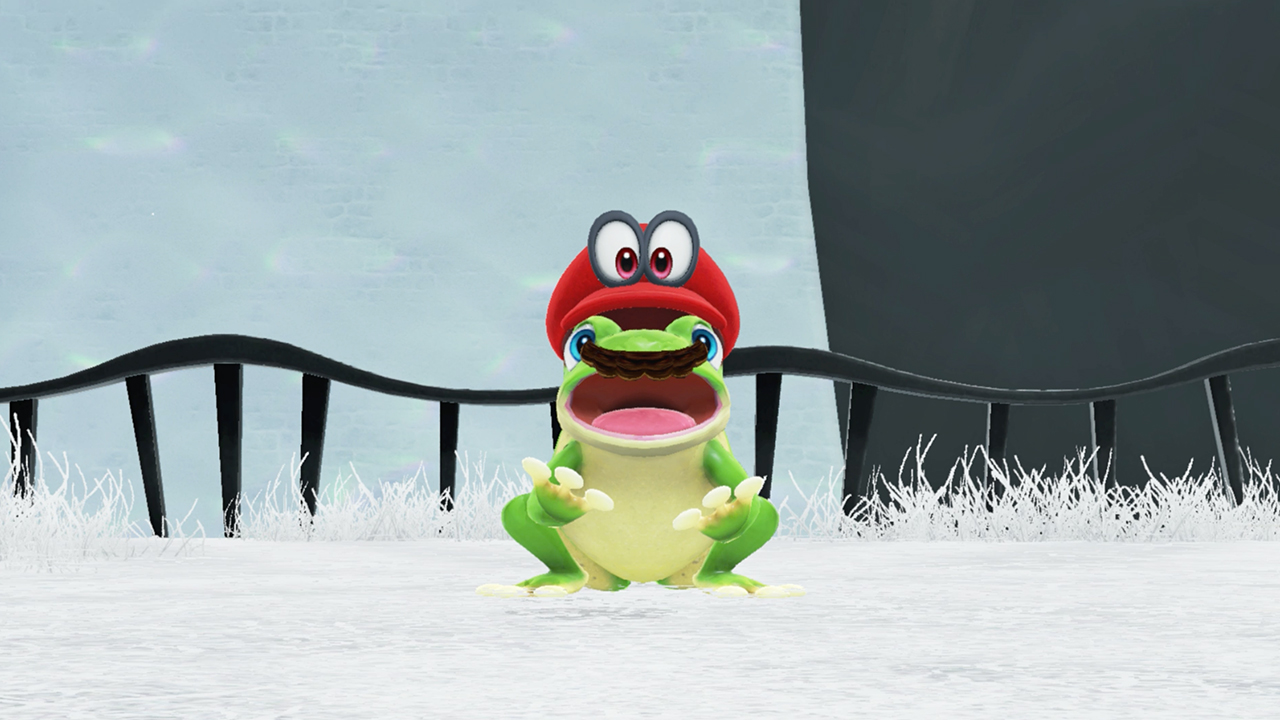
Now, Mario’s cap is a character in and of itself. With either a button press or JoyCon motions, Cappy can be flung out in front of Mario; it’ll come back to him instantly, but it can also be kept in place to serve as an impromptu platform, or moved around to whack enemies and collect coins. Chuck it at a Piranha Plant in the Wooded Kingdom and it’ll try to gobble Cappy up, no longer able to spit troublesome blobs of poison that pool on the ground while it’s chowing down. Fling it at one of those troublesome, evasive rabbits, and you’ll stun it for a moment, making one of the series’ most infuriatingly flighty opponents a little easier to pin down.
Cappy’s real purpose, however, is to power the capture mechanic, which is where Nintendo really rips up the timeworn Mario rulebook. Throw it at one of a huge number of enemies or bits of scenery and Mario will possess it, temporarily adorning it with his iconic hat and moustache. Suddenly he’s a Goomba, a Koopa or a Bullet Bill; he’s a frog or a T Rex; he’s a bollard, a Christmas tree, a tank. Each comes with its own moveset or ability, or will solve a puzzle. A Goomba’s boots won’t slip on icy ground, for instance, while a Bullet Bill can be used to traverse large gaps. Bollards are springy, and can be used to fling yourself long distances; Mario will hit the ground running, arms out to the side like aeroplane wings to emphasise the boost in speed.
The results are twofold. It challenges the way you think about traversing a Mario level, and sets Nintendo’s design teams free after three decades of being hemmed in by the arc of the protagonist’s various jumps. New enemies have been introduced, or old ones brought back, specifically for the opportunities they offer when captured. In the Sand Kingdom, for instance, Moe-Eyes (a variation on Super Mario Land’s Tokotoko statues) can see hidden platforms when they put their sunglasses on. In the Wooded Kingdom, Uproots can grow high into the sky to reach lofty platforms.
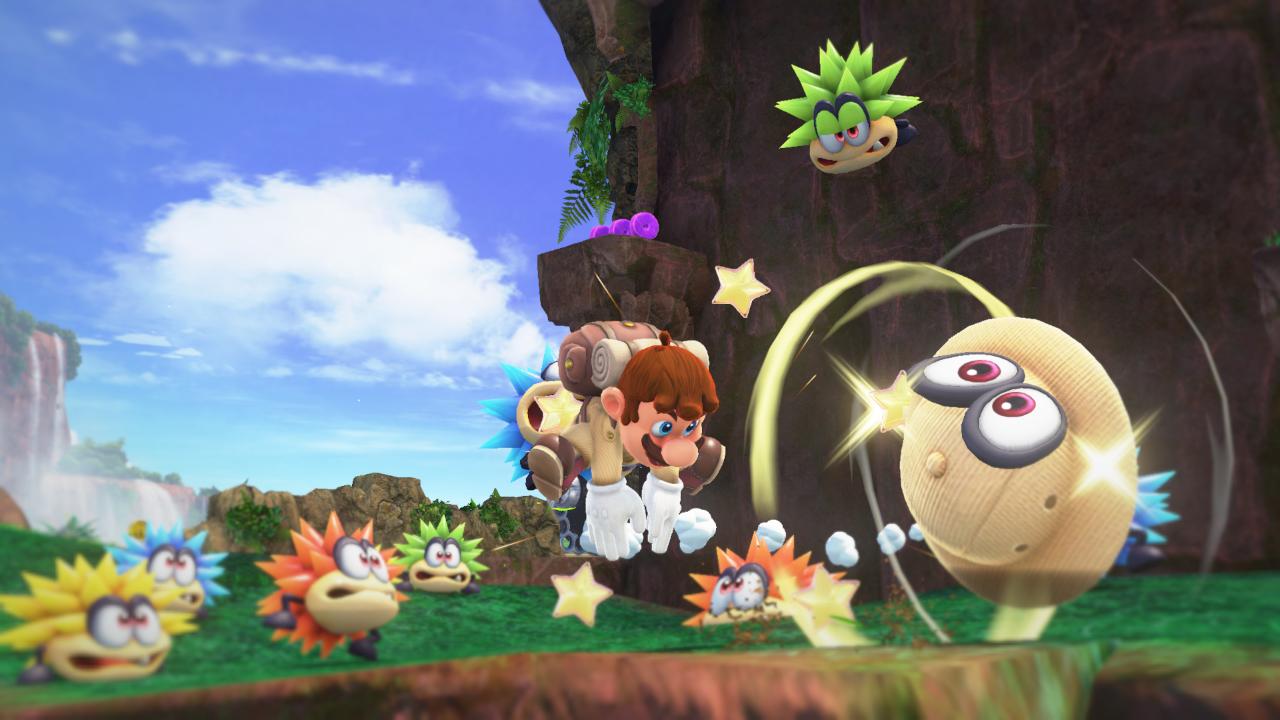
Uproots are adorable creatures, at first walking around with a plant pot on their heads that must be knocked off before they can be captured. “One rule we set up,” says game director Kenta Motokura, “is you can’t capture enemies with a hat on. No one wears two hats, right?” Motokura admits that the capture mechanic brings its own set of challenges (“We hope no one will break the sequence of the game itself,” he says) and as I play I can see the new little balancing acts to keep players in check. Bullet Bills will explode after a time, for instance, to ensure you can’t just fly from one end of the level to the other. While Cappy can pick up coins in flight, he can’t collect Moons – Mario has to get there to finish the job. These are subtle, but vital, limitations ensuring that Mario’s new power is groundbreaking, without being game-breaking.
All that combines into a game that, like Breath of the Wild, thrums to the rhythm of curiosity and discovery. Odyssey, too, is a game about seeing something that piques your interest, and working out how to get there. Here, however, chances are that the solution will involve throwing your cap at something, and that what follows will be something you’ve never done in a Mario game before. It is, like its Switch stablemate, utterly intoxicating.
New worlds, and a new way of living
Nintendo’s desire to break the Mario mould spreads far beyond Mario’s massively expanded powers, too. For a start, this is the first time we’ve seen him outside the Mushroom Kingdom, rubbing shoulders with salarymen in suits, creeping around dozing dinosaurs, flying from one new place to another in an airship shaped like a top hat. Odyssey also does away with the lives system, with death seeing you deposited at the most recent checkpoint in exchange for a fee of 10 coins. With no need for extra lives, coins themselves have at last been rethought, and now actually matter. There are two currencies: gold coins, of which the supply is theoretically infinite; and a local currency unique to each world, of which 100 are cosseted about the place in fixed locations. Both are used to buy souvenirs and trinkets to decorate Mario’s ship, the Odyssey, and to buy new outfits.
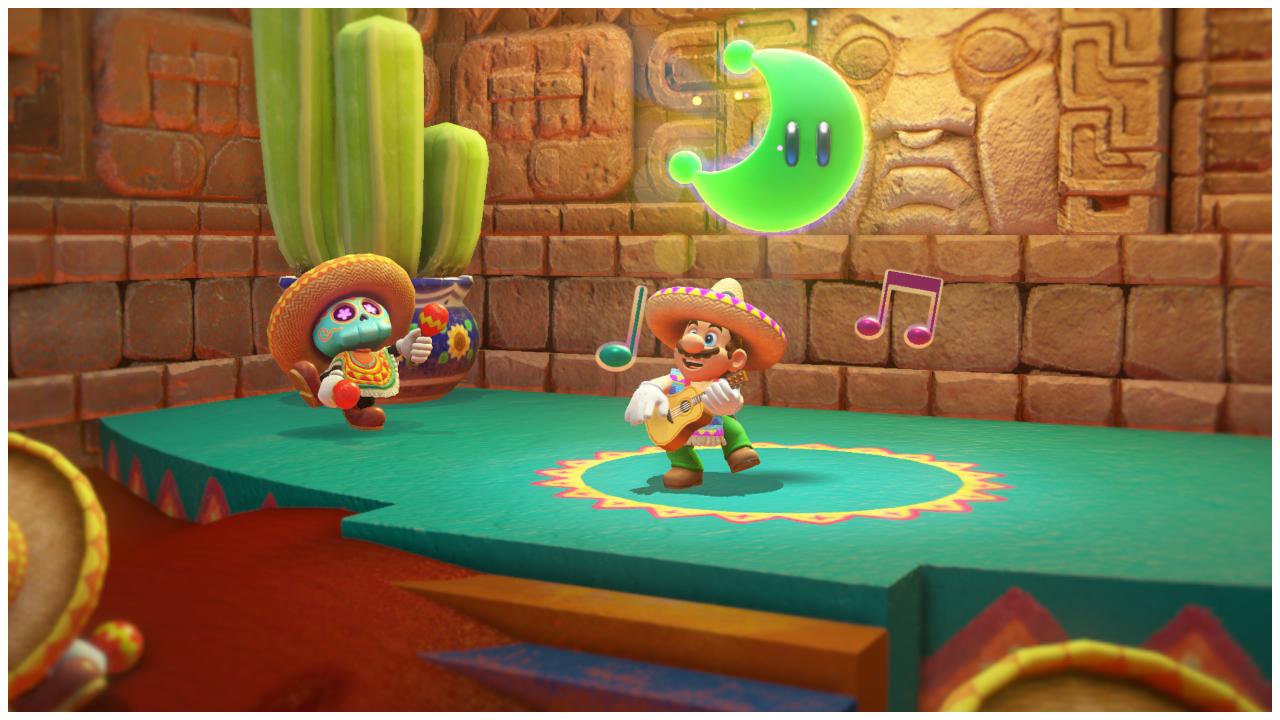
Yep, outfits. If you thought the sight of Mario as a dinosaur, Cheep Cheep or Goomba was mad, just wait until you see him in a pinstripe suit and fedora, a builder’s hard hat and overalls, or a wetsuit and snorkel. At first, it seems like sacrilege. Then, it’s funny. Before long you’re scurrying around levels ignoring everything but coins so you can buy your next outfit, and it just feels right. “Mario is a strong IP,” Motokura says. “Wherever he goes, whatever he wears, he’s Mario.” So it proves.
This, you’d think, would have been a tough sell within Nintendo a few years ago. But the relative failure of Wii U and 3DS appears to have made the management realise it was time for some fresh thinking. With that has come a sort of changing of the guard. While Eiji Aonuma remains the figurehead for the Zelda series, Breath of the Wild was made under Hidemaro Fujibayashi’s direction. While we still most readily associate Mario games with Shigeru Miyamoto, Odyssey is being produced by Koizumi, with Motokura as director. Fujibayashi spent most of his career at Capcom, working on Zelda games; Motokura began his time at Nintendo as an artist on Super Mario Galaxy. It is hard not to draw a direct line between the promotion of (relatively) youthful exuberance and the playful rulebreaking of the games that have resulted from it.
“Generations turn over,” Koizumi says, “and when you’re working on games like these, you can’t have the same veterans on everything forever. Any time that you have a new generation working on games, they’re always going to think about the things that are close to them, and incorporate those into the game somehow. That definitely changes the way the games feel.” He’s half right – Mario games always feel wonderful. Odyssey, however, is something more. The last time Nintendo re-thought, from the ground up, how a Mario game should work, it resulted in one of the greatest games ever made. Odyssey promises the most transformative change this beloved series has known since Super Mario 64. Suddenly, October 27 seems like a lifetime away.
This article originally appeared in Edge magazine. For more great coverage, you can subscribe here.
Nathan Brown is a video game consultant and writer, and former editor of Edge magazine. He's now a freelance journalist, still writing for Edge magazine, but his main passion is writing Hit Points, a regular newsletter about the videogame industry.
